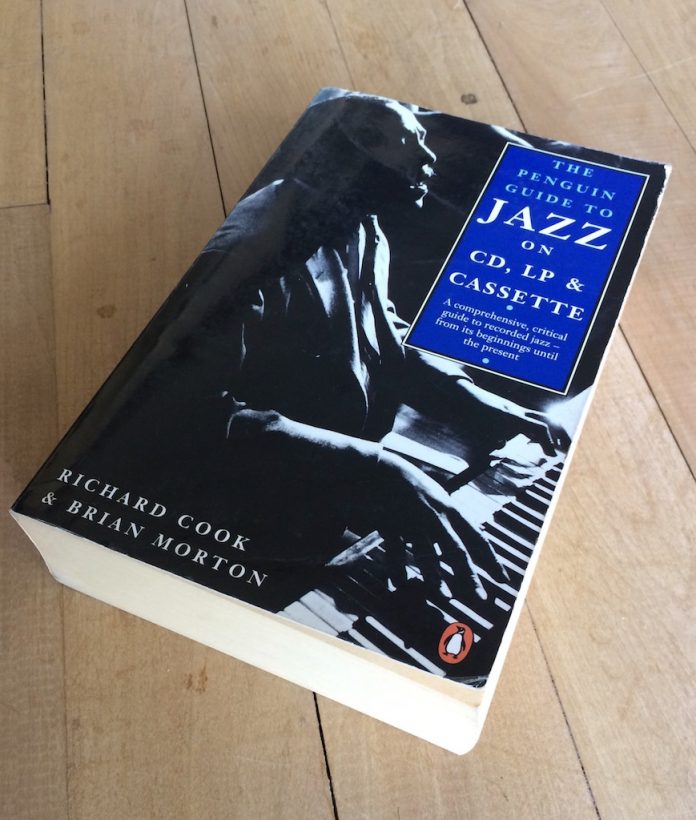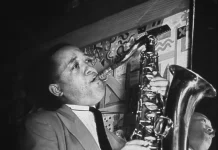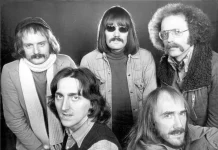A book of 1,506 pages must tell a gripping tale or list useful information; otherwise, it’s a doorstop. I found such a book, The Penguin Guide To Jazz On CD, by Richard Cook and our own Brian Morton, helping to hammock a shelf of a charity bookstall in Appleby. It was an old friend, and one of its later siblings was back home in Wales. So I recommended it to a fellow browser, who’d looked my way when I started to whistle Bernie’s Tune.
Now that the internet enables us to find rarities, it’s more than useful to be reminded of jazz no longer always available new and, by some accounts, heading for the history file. Cook and Morton left out little of what stood in their sights, hence the tree-trunk’s worth of paper on which their reference book was first published in 1992, thereafter going into a few updated versions, starting in 1994.
I also already owned the authors’ The Penguin Guide To Jazz On CD, LP And Cassette. In 2010, they brought out The Penguin Jazz Guide: The History Of The Music In The 1,001 Best Albums. There’ve been competitors, notably, arguably, and confidently The Experts’ Guide To The Best Jazz Recordings (in the All Music series of guides) by Ron Wyn, Michael Erlewine and Vladimir Bogdanov, also in later edition alongside their companion volume The Definitive Guide To Jazz Music.
In any case, the original effort by Cook and Morton was prodigious. Of the total pagination in the third edition, over 100 comprised the index, always a guarantee of forensic concentration and duty to scholarship. The absence of an index in a reference book is a dereliction of duty; the presence of names that most have forgotten or had never heard of – in this case pianist Dave Dapogny, singer Tiziana Ghiglioni and saxophonist Werner Ludi – is further testimony to wide knowledge, thorough research, and one’s own shortcomings.
The authors knew from the start that they were dealing with a fluid medium. Jazz on vinyl had disappeared for the third edition, and so little remained on cassette that comment on that was also eliminated. Cook and Morton decided in 1996 to concentrate exclusively on CDs. “The development of high-density CD looks likely to be the next priority in sound-carrier evolution”, they opine bravely in their introduction. “Time must decide”.
It certainly must and already has.
I’m sure there are up-to-date versions of every guide to recorded music there ever was, including mp3 downloads and streaming; I’m equally sure that some authors less dedicated than Cook and Morton have left the race, unable or unwilling to keep up. Once something has been streamed, or made available for streaming, does it exist for ever? I’ve no idea. Nor do I know if anything remains downloadable for eternity. Once music has been recorded, of course, it will be with us for as long as there are “sound-carriers”, even if it has to be transferred from one carrier to another.
Call me retro, but I believe that if you can physically handle something it’ll be with you till it’s worn out, by which time it will, one hopes, exist in another material form. I used to lose sleep over the fate of gleaming master discs: whether the existence of the music on them would vanish with decline of interest and the recycling of the unwanted “carriers” into substitutes for Tarmac made by Sustainable Construction Solutions plc. Today, I fret over anything lodged for safe-keeping in a “cloud”. It’s the ne plus ultra of nebulous: the nebulous nimbus, disappearing only to return in another wispy shape. I’d love to know how Cook and Morton would have reacted to the recent return of vinyl.















